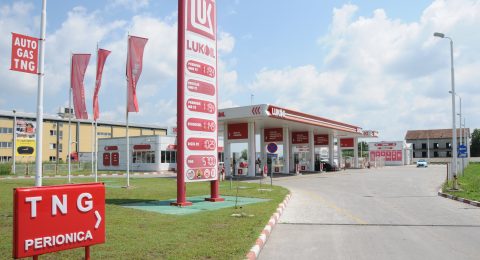Additive manufacturing, also known as 3D printing, is a recent innovative solution that is playing a crucial role in the growth and development of the oil and gas sector.
As oil and gas production needs increase, so too do operators’ demand for efficiency and sustainability. Additive manufacturing is a valuable tool that enables the faster and more efficient manufacturing of spare parts, equipment, and components, while reducing downtime and maintenance costs. This technology can help to lead to an increase in investments and achieve sustainability at the same time.
Additive Manufacturing: Bring to the Fore
An article published in ScienceDirect, defined additive manufacturing technology as a process used to fabricate a physical object from a 3D digital form by laying down and tying a large number of thin layers of materials. Also, it can realize complex prototypes and parts on site by using various materials, such as metals, polymers, ceramics, and composites. According to GE Additive, one of the additive manufacturing developers, this technology uses data computer-aided-design (CAD) software or 3D object scanners to create an object in precise geometric shapes. This data directs the print head precisely to deposit material upon the preceding layer.
Additive manufacturing passes through various types of processes depending upon the type of materials and the way used in manufacturing. These processes include powder bed fusion, binder jetting, direct energy deposition, material extrusion, material jetting, sheet lamination and vat polymerization.
Additive Manufacturing to Change Oil and Gas Industry
The oil and gas sector is one of the major untapped markets for additive manufacturing although it is important for the industry as it can help in boosting productivity and reduce operational costs. The need for cost reduction is highly needed within the industry due to the current challenges such as price instability of the transitions towards alternative energy sources. According to the World Economic Forum, Additive manufacturing can make oil and gas companies save cost and time worth up to $30 billion. It is expected to revolutionize the way of designing, manufacturing, and distributing the products, DNV stated. However, this technology is still limited in its use in the oil and gas sector.
Impacts of Additive Manufacturing on Oil & Gas
This emerging technology has a lot of benefits for the oil and gas sector. First, it has the ability to accelerate, update, and develop the product, and make it more flexible at lower costs. This advantage could detect any potential hazards during the design phase and before production, which would save both money and time. Second, it can help in reducing lead times, such as delivery of specific parts needed in the operation as it can take days instead of weeks, for example, in lowering production costs. Additionally, additive manufacturing can reduce the time of maintenance and costs, consequently, especially on remote or offshore sites. Moreover, some of its types such as Direct Energy Deposition can be used in fixing or remanufacturing old equipment.
The fourth benefit is that it can enhance the supply chain by enabling the transition to have digital stocks, in addition to creating on demand spare parts in remote and offshore sites where spare parts supply is limited or have logistical difficulties, taking too much time. So, this new technology can provide the needed parts on site which would save time and costs.
Additive Manufacturing Applications in Oil & Gas
There are many trials by the oil companies to deploy 3D printing within their operation as well as generate solutions supporting this technology to be used in the sector. For example, in 2016, Shell used 3D printing to prototype oil and gas drilling buoy for the Stones gas and oil drilling station, an article published by Falcon Technologies International reported. Additionally, an article released by 3D Natives mentioned some other companies’ applications. It stated that Shell has collaborated with 3D Metalforge to provide 3D printed heat exchanger parts to be used in manufacturing heat exchanger tube components at lower time.
Furthermore, ExxonMobil has announced entering a project with AML3D, an Australian manufacturer of metal 3D printers, to design a metal pressure vessel using 3D printing and it is expected to be the largest commercially available 3D printed vessel in the market. AML3D also created a metal oil & gas high-pressure piping component using 3D printing in a hybrid approach in 2021.
In addition, Chevron has cooperated with Lincoln Electric, a company specialized in manufacturing production tools by using 3D printing, to provide the needed on demand parts. Moreover, additive manufacturing is used in hydraulic block subassemblies by GKN. Also, TotalEnergies has partnered with Vallourec, in 2021, to install 3D printed waterbushing in the North Sea which is used in drilling operations to block hydrocarbon surges from wells during their construction.
According to an article by Am Chronicle, the Arab world also has shown a great interest in applying additive manufacturing. For example, the Jordanian government announced the establishment of the 3D Printing Center at the Jordan University of Science and Technology in 2018.
Additionally, the UAE launched, in 2016, “Dubai 3D Printing Strategy” aiming to use 3D additive manufacturing for resolving critical challenges of oil and gas industry. Furthermore, Saudi Arabia included in its “Vision 2030” plan, the development of a 3D printing industry to foster innovation and capabilities. Petroleum Development Oman (PDO) cooperated with Spare Parts 3D (SP3D), a French startup, to assess the capability of using 3D printing in manufacturing 150,000 unique spare parts.
Egypt’s government has launched several initiatives to promote 3D printing, especially in the oil and gas industry, such as the establishment of the Egyptian British Bureau for Additive Manufacturing Services in 2019. Additive manufacturing is already being applied in several industries in Egypt, such as medical and dental devices, and is poised to revolutionize the country’s oil and gas industry.








